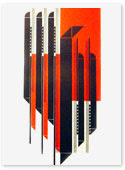I have to pick between these two books to redesign... its a toughy!
My first idea was a book called Flowers for Algernon by Daniel Keys. It was my favorite novel from my late elementary years. I really appreciate the story because it is such an unusual plot about a man with an unusually low IQ who begins an experiment on a rat. The rat, Algernon, ends up teaching the man alot about life and even relationships between humans and animals. I eventually decided to avoid this book due to the lack of interest compared to other books.
so! here is where you come in, please give me some feedback!!!!
option 1:
Crank by Ellen Hopkins. She began writing nonfiction books for younger ages until the unfortunate turn of events when her teenage daughter began a struggle with drug addiction. This is the first of her series of books involving serious issues among young adults like books titled
Glass and
Burned.
The novel is a story depicting the difficulties in growing up with divorced parents and the issues that may arise from the situation. The reader follows the initially innocent life of Kristina, a gifted high school student who seemingly had it all together. Throughout the book we see the unraveling of her life as she is consumed by addiction and insecurity.
this novel is written in a unique prose... almost poetry. Each page is a puzzle or play on words. The pages are arranged in ways that force the reader to jump from paragraph to paragraph or even word to word in strange ways. I feel this was a way of creating a feeling of anxiety and confusion to further incorporate the reader into the plot.
jumpy, driven, frantic, painful, stiff, powerful, unrefined, belligerent, meaningful yet emotionless, complicated, battle of self
this story conveys a message of the incredibly difficult theme of human connection and relationship along with the huge theme of addiction and bondage
protagonist... Kristina painfully approaches rejection, addiction, illness and even death and eventually the glimmer of life in her newborn child.
antagonist... the isnt necessarily one antagonist. But if i had to point one out it would be the unmistakable desire for human connections like love, appreciation and approval, which in turn forces the protagonist into a spiral of sex, drugs and alcohol.
-"the monster" (crank)
-"Bree is back" Kristina's alternate personality, the one who does drugs
the important part! I chose to redesign this novel not because it is one of my favorite books or even because i liked it, but more because I feel like the subject matter is so foreign to me that designing a cover would involve a challenge. It would push me to design based on something i am not comfortable with (drugs, insecurity, bad relationships, death)
option 2:
The Buddah of Suburbia by Hanif Kureishi
It is said that this is an autobiography where Kureishi is the main character, Karim. Karim is a mixed-race teenager growing up in London. The story unravels as you watch him grow up in a broken family as they search for identity. Kureishi also wrote a similar story of identity struggle called
The Black Album.
Throughout the novel, Karim tries to escape his lowly life as an indian boy by traveling and making new friends in the slums of London. He eventually gets a job as an extra in a derogatory play which leads to more opportunities in the theater. He meets important people and finds a way to move to america.
music, identity struggle, sex and love, family values, drugs, experimentation, race, adulthood, sibling rivalry
The message is one of self discovery and the making of your own path.
protagonist, Karim, evolves from a teenage boy to a young adult
antagonist, all of the family members and adults who treated karim with disrespect because of his race and situation
-"My name is Karim Amir, and I am an Englishman born and bred, almost"
-"There were kids in velvet cloaks who lived free lives."
I chose this book for the sole reason that i liked reading it. Because i feel comfortable with the subject matter and the amount of back story going on in the whole novel, there would be plenty of ways to show the cover.

























